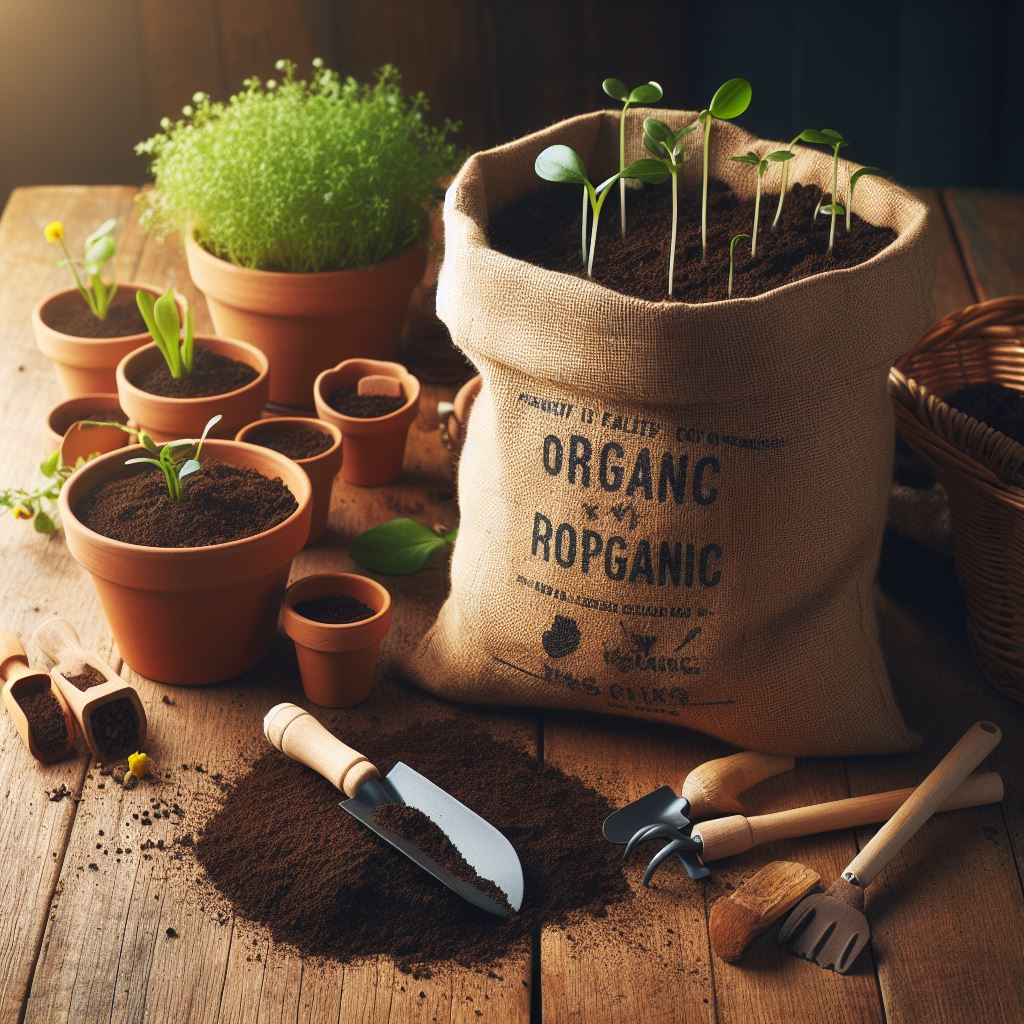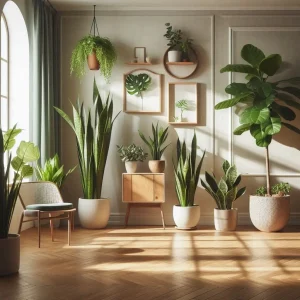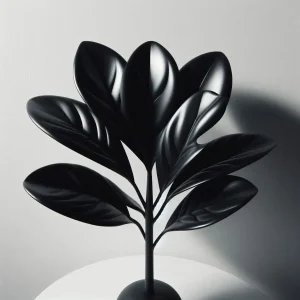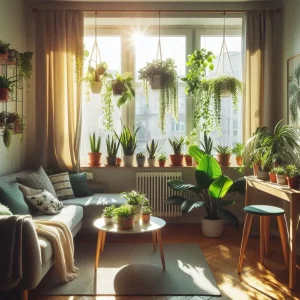Types of Potting Soil for Indoor Plants
Page Contents
ToggleBelow, we’ll discuss various types of suitable soil for indoor plants. Some of the most well-known types of soil for indoor plants include leaf soil, vermicompost, humus, sandy soil, peat moss, perlite, loamy soil, and clay soil. Let’s explore these soils along with their introductions.
| Type of Potting Soil | Description | Pros | Cons |
| Commercial Mix | Available in flower shops, may not be suitable for all plants due to improper disinfection or composition | Conveniently available; may contain essential nutrients | Not properly disinfected; composition may not be suitable for all plants |
| Perlite | Provides good drainage; lightweight | Improves soil aeration; prevents waterlogging | May float to the top of the soil; does not provide nutrients |
| Sand | Enhances drainage; adds weight to soil | Prevents soil compaction; aids in water drainage | Does not provide nutrients; may affect soil pH |
| Peat Moss | Retains moisture; improves soil structure | Provides good water retention; enhances soil texture | May become compacted over time; acidic pH may affect some plants |
| Garden Soil | Rich in nutrients; supports plant growth | Contains essential nutrients; supports plant growth | May contain pests, diseases, or weed seeds; may become compacted |
| Vermiculite | Improves soil aeration; retains moisture | Enhances water retention; improves soil structure | May contain asbestos (in older varieties); does not provide nutrients |
| Worm Compost | Organic fertilizer; enhances soil fertility | Provides nutrients; improves soil structure | May contain weed seeds or pathogens; may emit odor |
| Leaf Mold | Organic matter; enriches soil | Adds organic nutrients; improves soil structure | Slow decomposition process; may attract pests |
| Humus | Organic matter; enhances soil fertility | Enriches soil with nutrients; promotes microbial activity | Slow decomposition process; may be costly |
Leaf Soil: The Primary Soil for Plants
One of the most common types of potting soil, readily available in all nurseries(that can be found in all flower shops,) is leaf soil. It is derived from the decomposition of plant and tree leaves in the soil. Contrary to popular belief, leaf soil has very low nutritional value and is mostly used to lighten the soil. Therefore, if you use this soil for your pots, be sure to mix it with a combination of garden soil and vermicompost to ensure both a lightweight texture and the necessary nutrients for plant growth.
Sandy soil, also known as sandy loam, should also be mixed with other soils because it lacks the necessary nutrients for plant growth on its own and retains much less water due to its high drainage. Therefore, it is a good option for succulents and propagation, but it must be combined with other soils to enhance success in plant care. For meaty plants, a combination of sandy soil + garden soil + cocopeat and peat moss can be used.

Peat Moss: Suitable for All Plants
One of the excellent soils you can use for all indoor plants is peat moss, also known as turf soil. This soil is formed from the remains of moss called Sphagnum, algae, and decomposed leaves. It has a black color with coarse particles, which promotes good drainage and aeration for plants. However, to improve its performance, it can be mixed with a small amount of garden soil and perlite to create an excellent and nutritious soil for plants.
Peat moss can be used in various combinations:
| Feature | Description |
| Water Retention | Excellent water retention ability, retains moisture well in the soil, reducing the frequency of watering |
| Aeration | Provides good aeration to the roots, allowing for proper air circulation in the soil |
| pH Neutral | Typically pH neutral, providing a stable environment for most plants to thrive |
| Lightweight | Relatively lightweight, making it easy to handle and transport |
| Renewable | Sourced from coconut husks, a renewable resource, making it an eco-friendly choice |
| Biodegradable | Biodegradable over time, contributing to soil health and sustainability |
**With Heavy and Clay Soils**: Adding peat moss to heavy or clay soils improves aeration and lightens the soil. It enhances drainage and water retention in sandy soils.
**Clay Soil: Caution Needed**:
Clay soil consists of fine clay particles and has poor drainage and low aeration. It should never be used alone for indoor plants and must always be mixed with other soils. When watered, it becomes compacted and can lead to suffocation and death of your plants.
Cocopeat: Expensive and Attractive
Cocopeat, made from coconut husks, is an option among potting soils for indoor plants. It is relatively expensive and has the capacity to retain high moisture content. It is often mixed with other soils such as garden soil, vermicompost, peat moss, and perlite to create an excellent and nutritious soil for plants. If you intend to grow plants hydroponically, you can use cocopeat as a growing medium.
Cocopeat has numerous positive and negative characteristics, which we’ll explore below:
Positive Aspects:
- It has a strong water retention capacity, keeping the soil moist for a longer(long) period.
- It has high air porosity, making it a good choice for plant respiration.
- Due to its good nutrient content, it can enhance root growth in the soil.
- It is free from substances that promote weed growth.
- It is sterile, maintaining soil cleanliness.
- However, it should not be used for germination as it prolongs the germination process.
Perlite for Improved Drainage
Perlite is a type of potting soil that should always be used in combination with other soils to improve moisture retention and drainage. It is a volcanic mineral with a white color.
This soil contains 2 to 6 percent water in its composition and enhances gas exchange in the soil. One of the distinctive features of perlite is its ability to sterilize and keep the soil clean. Due to its white color, it also acts as an insulator against direct sunlight.
Important Note: Always use perlite in a specified and moderate amount in the potting soil mixture, as its high presence in the soil can increase moisture retention after watering and increase airiness in the potting soil.
Vermicompost Organic Fertilizer
Vermicompost alone is not potting soil; rather, it is a very soft, low-density organic fertilizer used to enhance plant growth and fertility. It has a brownish appearance and resembles granular powder.
Important Note: When using this fertilizer, which is now often mistaken for soil, avoid overuse as achieving balance is the best approach for plant care.
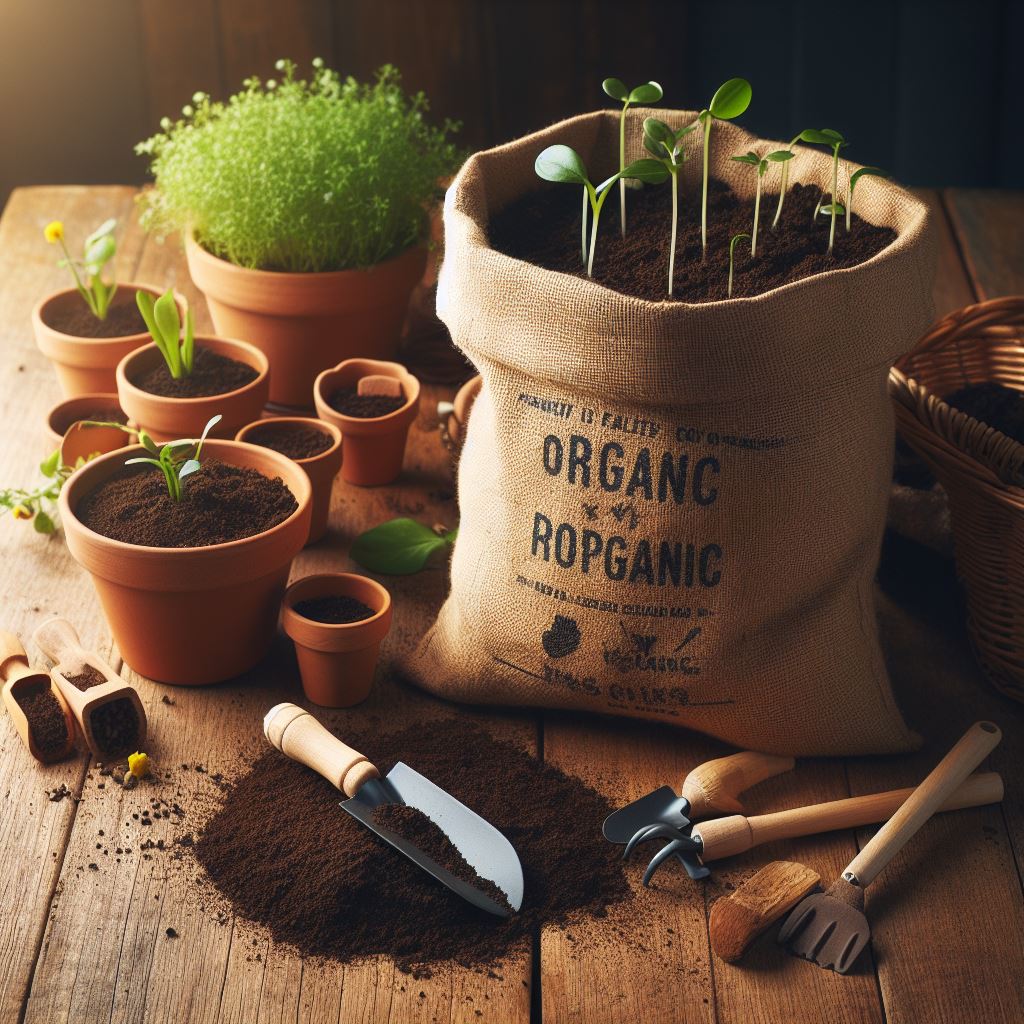
Loamy Soil
Loamy soil is one of the most commonly used and versatile soils for plants. While it is primarily used for growing vegetables, I recommend using this mixture for indoor plants with moderate water needs.
The composition of loamy soil is 40% silt, 20% clay, and 40% sand. Alongside this soil, be sure to use vermicompost. One of the notable features of this soil is its improvement in root access to nutrients and water.
Sphagnum Moss
Sphagnum moss, often known as peat moss, is suitable for growing cacti and most indoor plants. It is also excellent for plants with thick roots and high light requirements. This moss can retain water up to 25 times its weight and release it to the plant as needed.
Note that sphagnum moss alone is not suitable for plant cultivation and maintenance. It should be combined with other soils in small amounts.
Humus
Another suitable potting soil rich in nutrients is humus, which is produced from the decomposition of animal and plant remains on the soil surface. It has a dark brown to black color.
Do not use this soil alone; always mix it with the soils mentioned earlier to enhance plant growth. Humus also serves as an organic fertilizer due to its high organic matter content.
Silty Soil
Silty soil falls between sandy and clay soils and is suitable for maintaining various types of indoor plants. However, its coarseness or fineness determines whether it’s classified as silty clay or silty sand. Like sandy loam mentioned earlier, silty soil should not be used alone for plant maintenance.
Composite Animal Manure: Excellent Addition to Soils
Composite animal manure, particularly composted animal manure, is well-known and can be used for potting soil. However, I don’t personally recommend it for indoor plant use due to its tendency to promote weed growth and sometimes emit an unpleasant odor(smells).
Nitrogen content in cow dung is higher than in sheep dung, while phosphorus and potassium percentages are higher in poultry manure than in sheep dung. You can use these types of manure for trees or plants in your garden to witness excellent growth and suitability.
Garden Soil
Garden soil, one of the richest soils readily available everywhere, is typically heavy and should never be used alone for your plants. It contains high levels of nutrients, so try to use a small amount of it for your pots. If no other soil is available, mixing it with sand and animal manure can be suitable for your plants.
The choice of potting soil depends on the specific needs of your plants, but generally, for most indoor plants (excluding cacti and succulents), a well-balanced mixture can be created. The recommended combination includes perlite, peat moss, leaf mold, garden soil, and additional perlite. For cacti and succulents, a suitable mix would be sand, peat moss, and leafy soil.
To ensure a high-quality and disease-free soil, you can consider purchasing a commercial mix from reliable sources. A suggested mixture could be perlite, peat moss, leaf mold, and garden soil. If you prefer, you can also explore options from reputable vendors such as “Gol Mano To” for a hassle-free purchase, ensuring the quality of the soil.
In summary, the ideal choice depends on the specific requirements of your plants, and creating a balanced mix tailored to those needs or purchasing a reliable commercial mix can contribute to the health and vitality of your indoor plants.
Types of Suitable Potting Soil for Indoor Plants: One of the most crucial needs for maintaining indoor plants is selecting suitable soil for planting and nurturing. It should be tailored to the plant type and provide essential nutrients for their growth. Therefore, choosing appropriate soil is of utmost importance, and in the following, we will discuss the types of potting soil for indoor plants and how to choose the right one. So, stay with us.
Can potting soil be prepared at home?
In response to this question, it should be noted that yes, in fact, some soils available in flower shops are not suitable for plant cultivation because they are either not properly disinfected or the correct compositions are not observed. If you intend to prepare soil at home, be sure to properly disinfect the potting soil.
What soil is suitable for pots?
There is a fundamental principle, and that is good drainage. Most indoor plants kept in pots require soil with good drainage, so perlite or sand should definitely be used in the soil mixtures. Lightness in potting soil means that water can easily pass through it and exit from the bottom holes of the pot because water accumulation at the bottom of the pot can cause rotting and damage to the plants.
The best soil mix for indoor plants can be composed as follows:
- Approximately 45% broken sand or gravel.
- Approximately 15% compost.
- Approximately 15% clay to retain soil moisture.
- Approximately 10% additional supplements.
- Approximately 10% coco coir.
To further enrich the soil, you can also add shredded orange peels, tree bark, etc. Depending on the specific plant requirements, these percentages can be adjusted accordingly. However, it’s important to have the necessary knowledge about the plants.
Compost is a crucial component of soil mixtures and can be made at home. To make compost, simply decompose plant branches, animal manure, etc., and add worms, fungi, etc., to it.
How to make leaf soil:
Leaf soil is another type of soil that people like to make themselves and use for their plants. To do this, collect dry tree leaves and place them in a pit. To decompose them, sprinkle water and add urea or nitrogen to them.
Similarly, layer the materials in the pit on top of each other for proper decomposition. It’s also necessary to rearrange the layers every few weeks. After about 8 to 10 months, you can have the leaf soil you desire.
| Soil Component | Approximate Percentage |
| Broken sand or gravel | Approximately 45% |
| Compost | Approximately 15% |
| Clay | Approximately 15% |
| Additional supplements | Approximately 10% |
| Coco coir | Approximately 10% |
Testing the Quality of Potting Soil
Many people struggle to determine the quality of potting soil based solely on its appearance. However, you can easily assess whether the soil is suitable and of good quality through a simple test.
- Start by moistening some of the soil and placing it in your hand.
- Then, allow the soil to sit in your hand for two to three seconds.
- Afterward, open your hand and observe the soil. There are two possible outcomes: the soil may either remain clumped together or crumble apart.
If the soil remains heavy and clumped together, it indicates a high clay content. Such soil will have poor drainage and may suffocate plant roots. However, it will contain good nutrients. On the other hand, soil that crumbles apart easily is likely to be better suited for plants. Therefore, if the soil easily falls apart when you open your hand, it’s likely the best choice for your potted plants.
Another consideration during soil testing is the pH level or alkalinity of the soil. Each of these factors can significantly affect the quality of the soil you’re purchasing, depending on the type of plant you intend to grow.
| Test Procedure | Outcome |
| Moisten some soil in your hand. | Soil may either remain clumped together or crumble apart when you open your hand. |
| Allow soil to sit for 2-3 seconds. | |
| Open your hand and observe the soil. | – If soil remains heavy and clumped together, it indicates high clay content. |
| – If soil crumbles apart easily, it suggests better suitability for plants. | |
| Consider pH level or alkalinity of soil. | – High clay content soil has poor drainage but good nutrients. |
| – Soil that crumbles easily is likely to be better for plant growth. |

